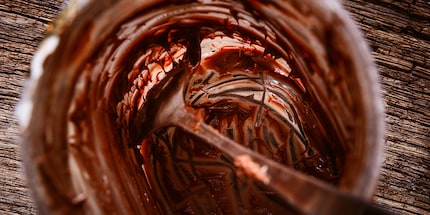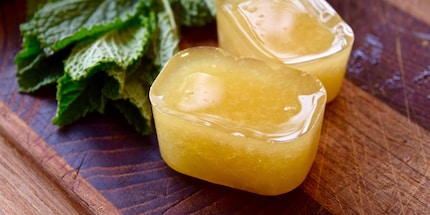
Guide
With these tips, you’ll be cleaning more sustainably.
by Raphael Knecht

No matter whether you’re living on your own or your family, there’s always leftover food after cooking. Perishable food can’t be stored for long. These clever hacks will help you use food items more sustainably by reusing them instead of throwing them away.
While only pioneers dared to tackle the subject a few years ago, zero waste is on everyone's lips today. Living a sustainable life is the goal of all those who care about our planet and its resources. In some areas of life, it only takes small adjustments to be more sustainable. Switching from using a car to using public transport, for instance, is easy. Other areas require more effort. Making your household more sustainable isn’t done overnight. Especially when it comes to storing and using food, there are plenty of challenges. The good news is, if you know a few clever tricks, it’s easy to make more sustainable choices in the kitchen.

Offers to buy large quantities are tempting because you usually pay less than if you buy individual items. But you don't always manage to use everything you buy before it goes off – especially if it’s something like fruit. Apples, for example, turn brown and soft after a few days. Instead of throwing them away, you can give them a second chance (so to speak). Overripe apples are excellent for baking – who can resist a delicious apple pie? Another way of using soft apple leftovers is making apple sauce. It’s easy to make: peel the apples, cut them into small chunks and boil them with a little water until they turn into a smooth sauce. What’s left is the skin of your apples, which you can turn into apple tea. Place the skins in hot water and boil for about 20 minutes. Then pour the water through a sieve and throw the skins on the compost. Whether as an iced tea or hot drink, homemade apple tea tastes fresh and fruity. You can also make apple vinegar from larger quantities of apples.

Although nuts last long, you might just have too many in your cupboard and no use for them. How about turning them into a milk drink? Soak hazelnuts overnight in twice as much water as nuts, then pour off the water and blend the nuts together with a litre of fresh water, a pinch of salt and a few splashes of syrup. Sieve the liquid through a clean kitchen towel, a straining cloth or, ideally, a nut milk bag. Either squeeze the thick liquid out by hand or wrap it tightly in the cloth and drain the milk through a sieve over a bowl. You can use the remaining mass as a flour substitute for baking. This recipe also works with almonds.

Chop up the peels of lemons, oranges and tangerines before you throw them in the compost. Their acidity makes them decompose more slowly than other kitchen waste. This problem can be avoided with a clever hack. Let the peels dry – in summer in the sun, in winter on the heater or in the oven. What’s important is that they dry out completely and don’t contain any residual moisture. Blend the dry peels to make a vitamin-rich powder, which you can add to your muesli or when baking. Or eat a few spoons of it as a power snack between meals. Make sure only to use organic fruits, as their peels don’t contain pesticides.

What to so with leftover bread? Freeze it. Wrap the rest of a loaf or individual slices in a kitchen or beeswax cloth and put it in the freezer. If necessary, defrost the slices and toast them so that they’re nice and crispy. After defrosting half a loaf of bread, sprinkle some water over it, place it in the oven for a few minutes and it will be lovely and crispy again.
If you have more than a few slices left over, turn thm into the Swiss dish «Fotzelschnitten» or «Knödel». You could also turn dry bread into breadcrumbs by slicing it, covering it with kitchen paper and letting it dry for about a week. Afterwards, blend the slices until you’re left with tiny crumbs. Making homemade breadcrumbs is that simple. A trick from my own experience: when I make pumpkin or vegetable cream soup, I add a slice of stale bread before blending it. This adds to the taste and the consistency. I use a second slice to make croutons: spread butter on both sides of a slice of bread, cut it into small pieces and bake or fry them in the oven or a frying pan until they’re golden brown and crispy.

I'm sure you know this situation: you've used up the chocolate spread, but there's still plenty of tasty spread in the bottom and on the sides of the jar. Don't rinse the jar with hot water. Instead, pour in warm milk, stir well with a spoon and enjoy a delicious chocolate drink straight from the glass. Afterwards, rinse the empty jar and reuse it. You can also empty a mustard jar in the same way: add the ingredients for your salad dressing and mix it all in the jar. You could even use the jar to take your own salad dressing to work.

Your lemonade isn't as fizzy as you'd like it to be? No problem. With two simple tricks, you can enjoy your favourite drinks long after it's expired. One way is to make ice cubes, which you can add to tap or sparkling water. This will make your water look and taste better. Or turn soft drinks into ice cream and frozen lemonade on a hot summer day or serve it as a surprise to your guests. This also works with leftover fruit juice.

Know of any other sustainable ways of recycling food to save it from ending up in the compost or rubbish? Thanks for sharing them in the comments field below. If you'd like to get more tips and tricks about housekeeping and want to stay up to date on food recycling, follow me by clicking on the «Follow author» button.
When I'm not stuffing my face with sweets, you'll catch me running around in the gym hall. I’m a passionate floorball player and coach. On rainy days, I tinker with my homebuilt PCs, robots or other gadgets. Music is always my trusted companion. I also enjoy tackling hilly terrain on my road bike and criss-crossing the country on my cross-country skis.
Practical solutions for everyday problems with technology, household hacks and much more.
Show all